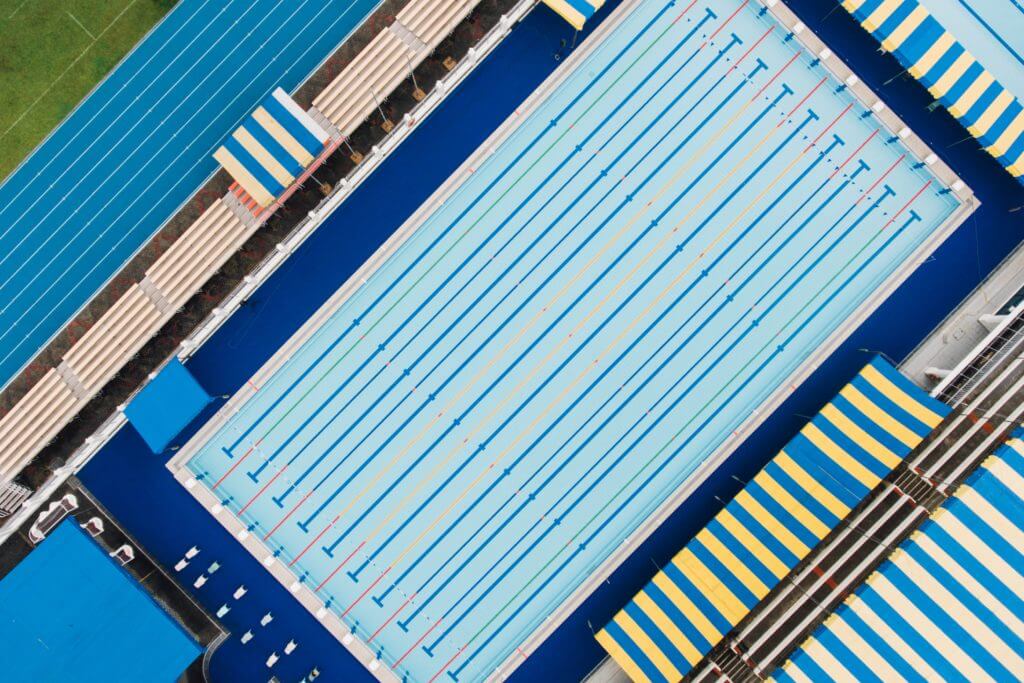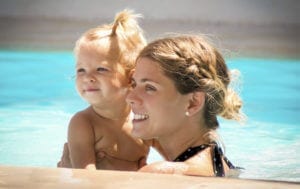After a year of waiting and uncertainty, the Summer Olympic Games will officially begin on July 23, 2021. Athletes from all over the world have trained, competed and qualified to participate in the 2021 Tokyo Olympic Games and viewers will finally get to see who will take home the gold.
With the Summer Olympic Games back in the spotlight, it got us thinking about “Olympic-sized” pools and other competitive swimming pool sizes.
If you’re unfamiliar with competitive swimming, here’s a quick explanation of the different competition pool lengths to give you a better understanding before you tune in.
50 Meter Pools
A 50 meter long pool is considered an “Olympic-size” pool and typically holds around 500,000 gallons of water. Additionally, a true “Olympic-sized” pool has a depth of at least two meters and 10 lanes, with a width of two and a half meters each. 50 meter pools are used in the Olympic Games, World Championships, international competitions and other swim club competitions during the summer season.
25 Yard Pools
The United States is the only country that doesn’t use the metric system and it’s, therefore, the only country that has a regulated distance of 25 yard pools for college and high school swimming competitions. Neighborhood HOA pools, recreation pools and National Collegiate Athletic Association (NCAA) competition pools are typically 25 yard pools.
25 Meter Pools
Meters and yards may seem like similar lengths to those outside of the competitive swimming world, but swimmers consider them to be very different. 25 meter long pools are slightly longer than 25 yard pools and are primarily used in international competitions.
To differentiate between pool sizes for swimming times, here are the three different types of competitive swimming pools:
- Long course meters, or LCMs, for 50 meter pools.
- Short course yards, or SCYs, for 25 yard pools.
- Short course meters, or SCMs, for 25 meter pools.
For example, one swimmer who competes internationally will have three different times for their 100 freestyle event: a LCM, SCY and SCM time. There are world records for SCM and LCM races, but only U.S. records for SCY events.
33 1/3 Meter Pools
Increasingly rare to find are the 33 1/3 pools, which typically accommodate the needs of water polo. There are many pools with unregulated lengths used for training purposes; however, in sanctioned swim meets the pool length must be measured and verified.
Now armed with pool length knowledge, you’re ready to watch any upcoming swimming event, including the Summer Olympics.
Looking for the easiest way to get the best, healthiest and most enjoyable pool water and air quality? To learn how Clear Comfort’s award-winning low-chlorine AOP pool disinfection can help, click here.






